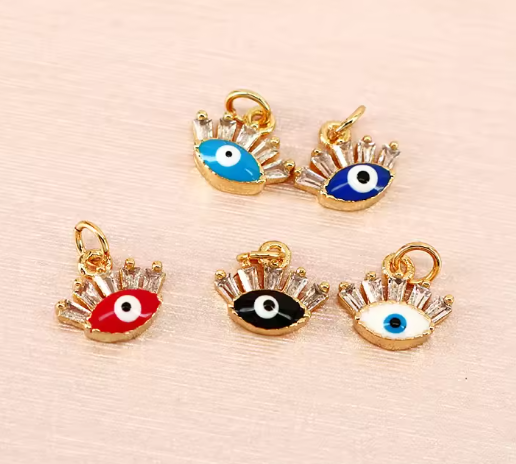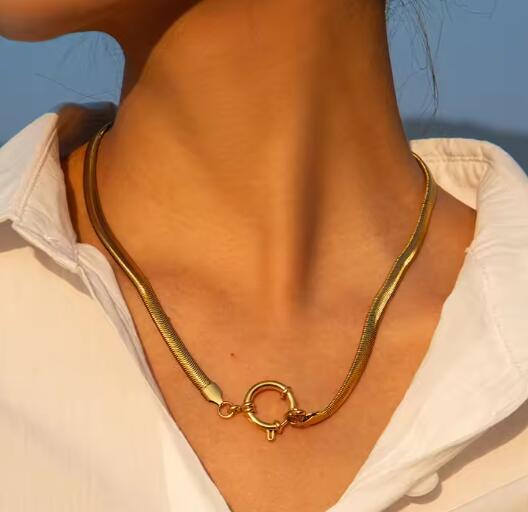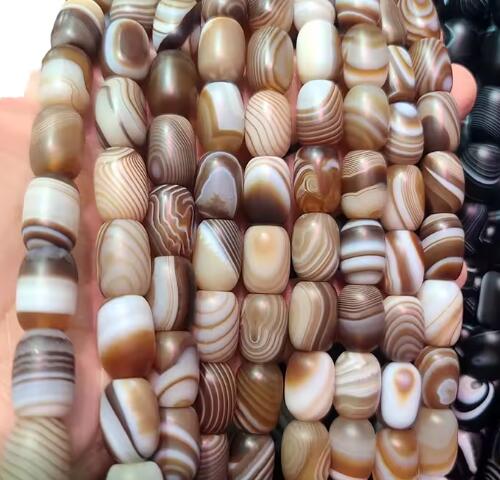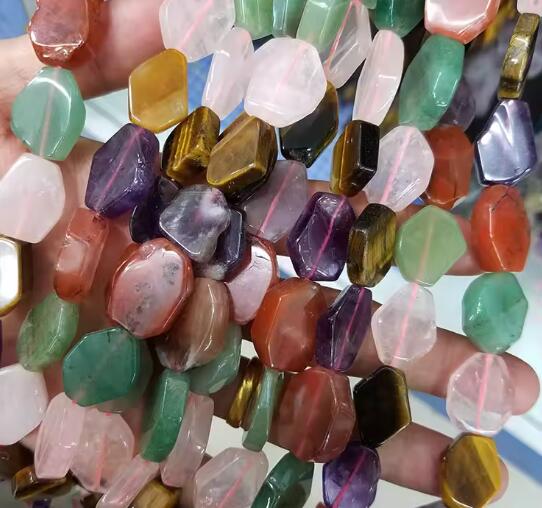Is Brass Alloy Jewelry Prone to Discoloration When in Contact with Seawater During Beach Vacations?
Beach vacations are all about sun, sand, and the ocean—and for many travelers, wearing favorite jewelry is part of completing that laid-back, stylish vibe. But if your go-to pieces are made of brass alloy, a common concern arises: Will they discolor when they come into contact with seawater? The answer is unequivocal: Yes, brass alloy jewelry is highly susceptible to discoloration when exposed to seawater—and the root cause lies in the chemical reactions between brass’s core components (copper and zinc) and the unique mix of salt, minerals, and marine elements in ocean water. Let’s break down exactly why this happens, how discoloration manifests in real beach scenarios, and actionable steps to protect your brass jewelry during your next coastal getaway.
1. The Science Behind Seawater-Induced Brass Discoloration
Brass is a copper-zinc alloy (typically 60–70% copper and 30–40% zinc, though ratios can vary slightly). Both metals react with key components in seawater, triggering corrosion and visible discoloration:
-
Salt (Sodium Chloride) and Chloride Ions: Seawater contains roughly 35 grams of salt per liter, with chloride ions being the most abundant. These ions act as an electrolyte, accelerating a process called “electrochemical corrosion” in brass. Copper reacts with chloride to form copper chloride (a pale green or blueish compound) and with sulfur compounds in seawater to create copper sulfide (a dark brown or black substance). Meanwhile, zinc undergoes “dezincification”—it dissolves into the water, leaving behind a porous, weakened layer of copper. Together, these reactions strip brass of its bright golden sheen, replacing it with a dull, discolored film.
-
Minerals and Marine Organisms: Seawater is also rich in magnesium, calcium, and iron, plus tiny organisms like algae, plankton, and bacteria. These particles stick to brass jewelry, forming a thin, sticky film that traps salt and moisture against the metal surface. This trapped mixture creates a “micro-environment” that speeds up corrosion—making discoloration more noticeable and harder to remove than if the jewelry were exposed to saltwater alone.
-
Sunlight and Heat Amplification: Beach days bring intense UV rays and warm temperatures, both of which boost the rate of chemical reactions. A brass bracelet left in direct sunlight while still wet with seawater, for example, will discolor 2–3 times faster than one stored in a cool, shaded spot. Heat increases the mobility of ions in the metal, making it easier for copper and zinc to react with seawater components.
2. What Brass Discoloration Looks Like in Real Beach Use Cases
Discoloration doesn’t happen overnight—but you’ll likely see changes in your brass jewelry within hours to days of seawater exposure:
-
Immediate Effects (1–2 Hours): Even a short trip to the shore (e.g., a walk where waves splash your wrists) can dull brass. The metal’s signature golden shine fades, replaced by a slightly cloudy or muted appearance. This is the early stage of corrosion, where a thin layer of copper compounds starts to form on the surface.
-
Short-Term Effects (1–2 Days): If you wear brass jewelry all day at the beach—swimming, sunbathing, or eating by the water—discoloration becomes more distinct. Rings may develop green or brown spots along the inner band (where moisture and salt get trapped against skin), while bracelets or necklaces show discoloration in crevices (like links or clasps). For example, a brass bangle worn during a morning swim might have a noticeable greenish tint along its edges by dinner time.
-
Long-Term Effects (3+ Days): Repeated seawater exposure (e.g., wearing a brass necklace every day of a week-long beach vacation) without cleaning can lead to permanent damage. The metal may develop a thick, crusty green layer called “verdigris” (a complex copper carbonate hydroxide compound) that’s tough to remove. In extreme cases, dezincification can weaken the brass—making thin pieces like earrings or delicate chains prone to bending or breaking.
3. Proactive Tips to Minimize Brass Discoloration at the Beach
You don’t have to leave your brass jewelry at home—just follow these steps to protect it:
-
Remove Jewelry Before Water Activities: The simplest way to avoid discoloration is to take off brass pieces before swimming, surfing, or even wading in the ocean. Store them in a dry, airtight container (like a silicone jewelry pouch or a zip-top bag with a silica gel packet) in your beach bag—away from sand, which can scratch the metal and speed up corrosion.
-
Rinse Immediately After Accidental Exposure: If seawater splashes on your brass jewelry, rinse it with cool, fresh water right away. Use a gentle stream (avoid high pressure, which can push salt into crevices) to wash off salt, minerals, and marine debris. Pat dry with a soft, lint-free cloth (never rub, as this can scratch the surface and spread corrosion).
-
Avoid Wet Brass in Direct Sunlight: If your brass jewelry gets wet—even with fresh water—don’t set it on a hot towel or beach mat in the sun. Blot it dry first, then store it in a shaded spot (like inside your beach bag or a cooler) to prevent heat from accelerating corrosion.
-
Pre-Treat with a Protective Coating: Before your trip, apply a thin layer of clear nail polish or a specialized metal sealant (like Renaissance Wax or jewelry-grade lacquer) to brass pieces. This creates a barrier between the metal and seawater. Focus on crevices (like links or clasps) where salt and moisture tend to collect, and reapply the coating every 6–12 months for long-term protection.
4. How to Restore Discolored Brass Jewelry Post-Beach
If your brass jewelry does discolor, you can often revive its shine with household items or gentle cleaners:
-
Baking Soda Paste for Light Discoloration: Mix 1 part baking soda with 1 part water to make a thick paste. Using a soft cloth or a cotton swab (for small crevices), gently rub the paste onto discolored areas in circular motions. Let it sit for 5–10 minutes (don’t let it dry completely), then rinse with cool water and pat dry. This works well for mild green or brown spots.
-
Lemon and Salt for Stubborn Stains: Cut a lemon in half, sprinkle a pinch of coarse salt on the cut side, and rub it lightly over the brass. The citric acid breaks down copper compounds, while the salt acts as a mild abrasive to lift stains. Avoid scrubbing too hard—this can scratch the metal. Rinse thoroughly with water and dry immediately to prevent further reaction.
-
Commercial Cleaners for Heavy Verdigris: For thick, crusty verdigris, use a non-abrasive brass cleaner (like Brasso or Wright’s Brass Polish). Apply a small amount to a soft cloth, rub gently, and follow the product instructions (some require rinsing, while others can be buffed dry). Avoid cleaners with harsh chemicals (like ammonia or bleach), which can damage the brass.
In summary, brass alloy jewelry is indeed prone to discoloration from seawater—but with proactive protection and quick post-beach care, you can keep your pieces looking their best. Whether you’re packing for a tropical vacation or a weekend at the coast, these tips will help you enjoy your brass jewelry without worrying about unsightly stains. By minimizing exposure, cleaning promptly, and restoring carefully, your brass pieces can shine through many beach adventures to come.









